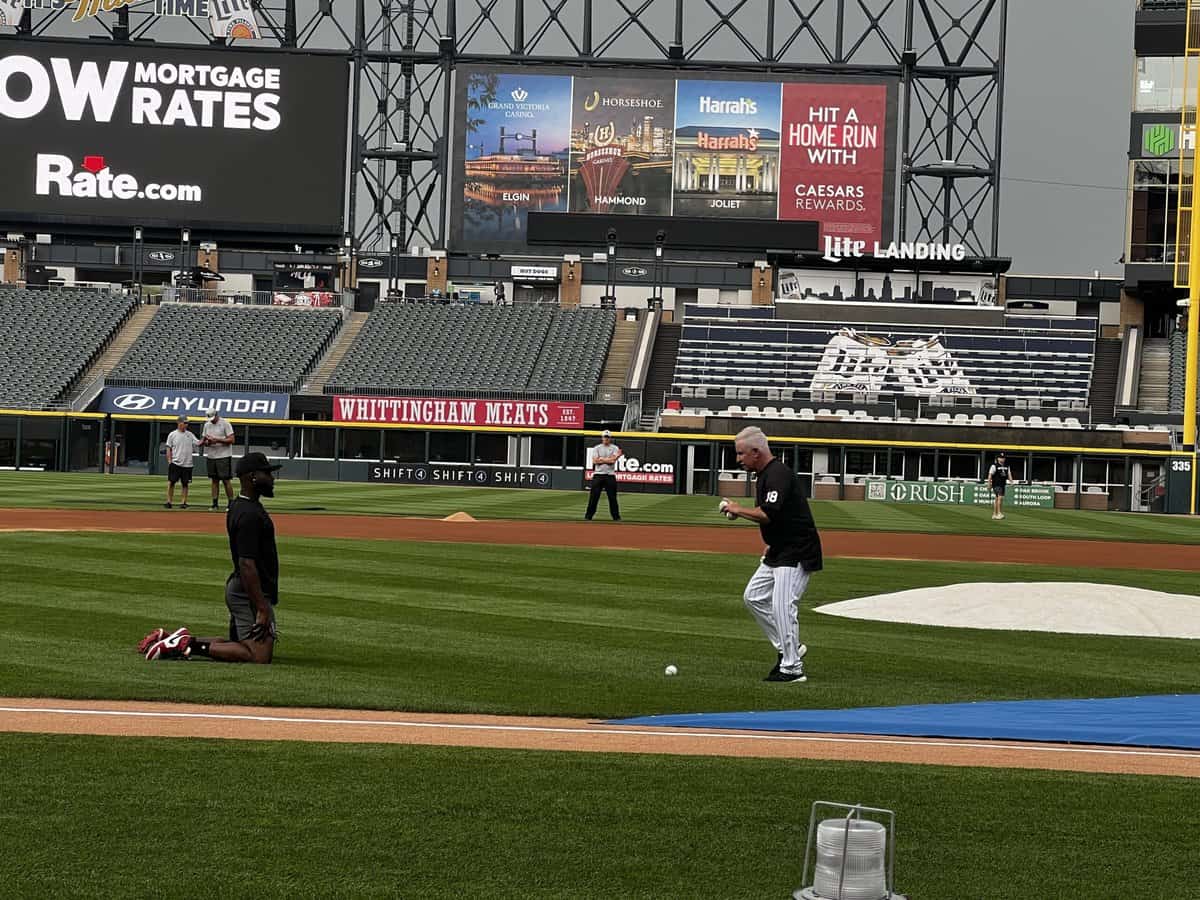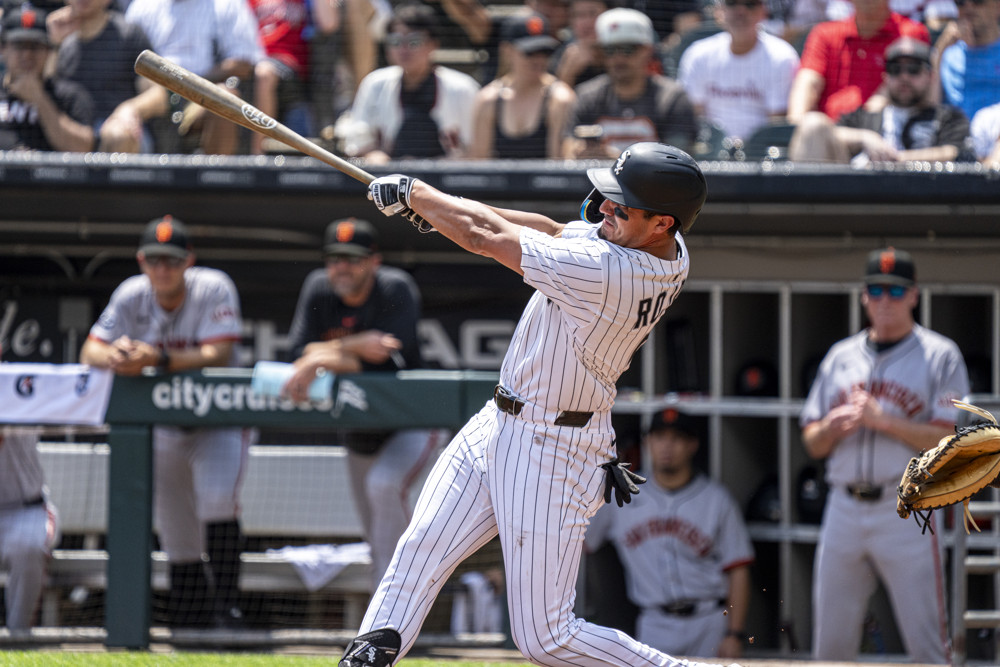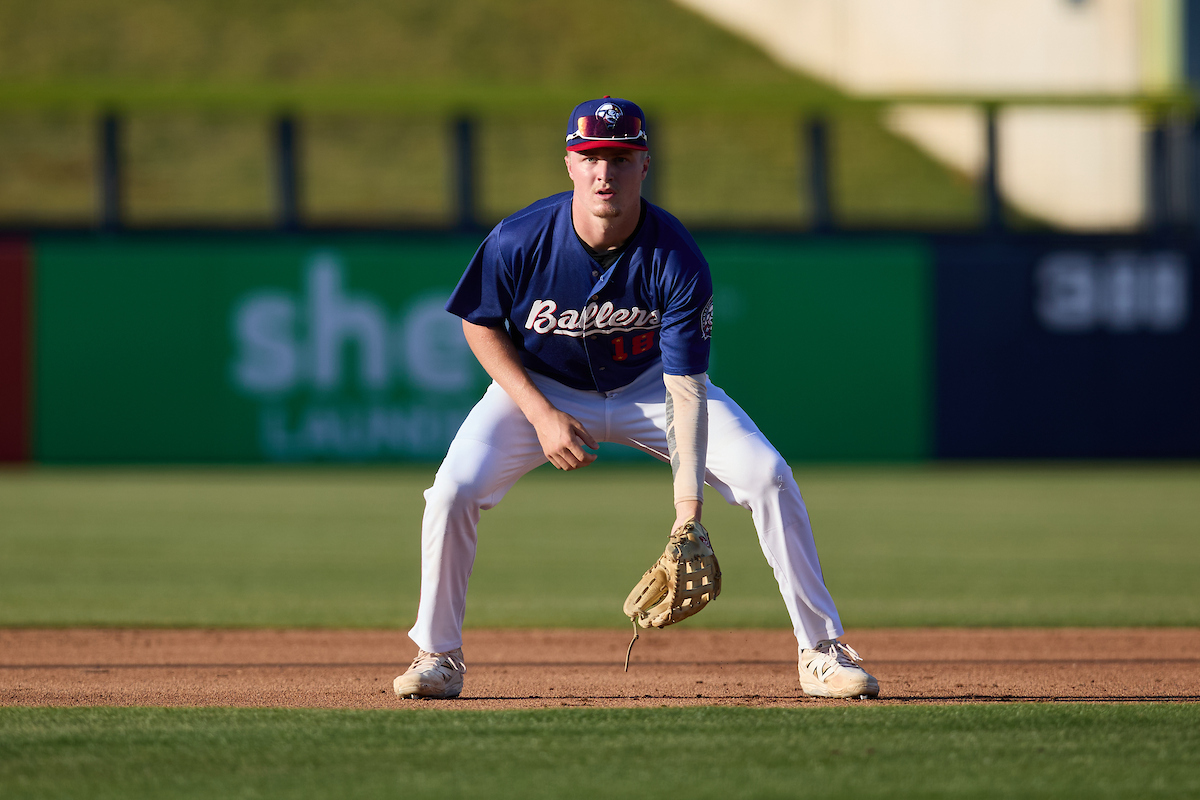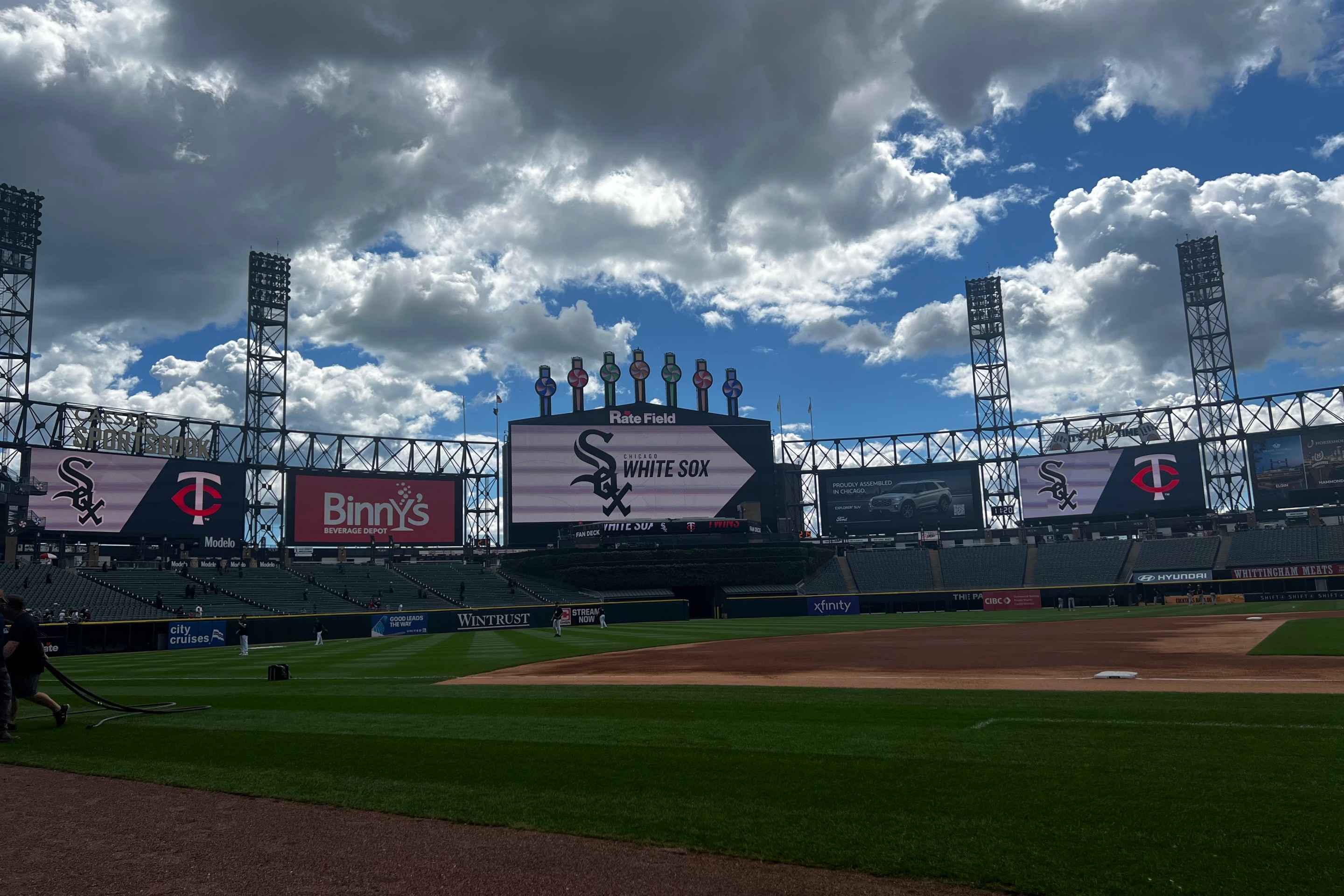I have alluded to this anecdote before at the old outlet, but at spring training a couple of years back now, a former White Sox evaluator was watching Bryan Ramos take ground balls on a backfield. In what they definitely meant as a compliment, they lauded that Ramos had the athleticism and bat to become a valuable outfielder after a likely departure from playing third base.
It's a credit to Ramos' work at the position he's loved since childhood that readers will want to know who this person was that was wrong about him as a third baseman. But the point of the story is that even for people who believed in the 22-year-old as a big leaguer before he had some top-100 prospect hype, his long-term defensive home was a question mark.
"Certain players -- and on the international front oftentimes it's even younger, earlier in their career -- you don't know which way their bodies are gonna go," said Chris Getz, who was player development director throughout Ramos' rise through the Sox farm system. "When it comes to Ramos, everything that's been offered to him throughout our organization, whether it be English education, nutrition, certainly learning the game and strength training, he's really soaked up so much and has been able to apply it."
Every position player's spot on the diamond is reflective of their battle to stick as high as they can on the defensive spectrum. When I gently broached the topic with Ramos in spring 2023, he quickly rattled off details about how his conditioning plan was geared to keep his broad shouldered power-hitting frame lean, and how he honed quick reactions necessary for third base through training. His determination has not waned in the intervening time.
"It's really important because third base is a place to react," Ramos said this past weekend. "You've got to be athletic. You've got to move around really well because those ground balls are coming fast. Everything's fast. That's why they call it the hot corner. That's why my whole routine is full of agility stuff, reaction stuff, because I know that translates to the game."
"He's done such a great job balancing his strength with agility, so he's been able to remain lean and still strong to allow him to stick at third base," Getz said. "What's separated him throughout his journey is a willingness to listen, which is helpful on the learning front and then being able to apply it. He's just a really gifted, gifted player that wants to be great."
After watching Ramos cut off Braden Shewmake at short for a slow roller a couple weeks back, so that he could start a run-saving double play, it's feeling more comfortable than ever to discuss his fight to stick at the position in the past tense. Since Ramos was in major league camp in 2023, the current major league coaching staff has enough background to talk about the present version as a different guy.
"The feet are working together with his hands," said third base and infield coach Eddie Rodríguez. "The first spring I saw him: a lot of separation, a lot of rush, a lot of 'hurry up and get to the ball and get rid of it.' Now he calmed that down and his feet started working together with his hands, which helped the accuracy. When you rush and they're not working in sync, the accuracy suffers."
Ramos' tendency to settle to a stop and set his feet for a throw across the diamond, even when working at high speeds and/or racing toward the third base line, is evidence to Rodríguez of the rookie's improved feel for a 'play clock,' and also a knowledge of self and his own limitations. It's a quality, but also represents an area where Rodríguez is working on "an addition."
Miming out how your arms swing in chorus with your legs while walking, Rodríguez explains how throwing underhand while on the run is a more natural movement than stopping and throwing overhand, which is famously an unnatural motion that baseball has made commonplace. Slowly, he wants to introduce Ramos to throwing underhand or lower arm slots as a time-saving measure. It's a tool to make him more capable while on the move, but ironically, their early work often starts out with Ramos on his knees so that the young infielder can focus solely on his arm path.
"He's talked to me a lot because he wants to throw at that angle for slow rollers," Ramos said. "We're going to keep working on that because sometimes I just don't do it. To be honest, I don't do it that much. But now I'm working with Eddie and I'm getting more comfortable."
Making the addition is sort of an endorsement of its own that Rodríguez feels Ramos is ready enough with more basic elements to start work on the play that Adrian Beltre made look routine, even if his running sidearm effort in the sixth inning Wednesday night got away from Andrew Vaughn. Ramos himself feels that his backhand is the part of his defensive game that has made the biggest progress in the past year, and he earns praise from evaluators for being a low-to-the-ground athlete who is comfortable making quick lateral movements on low liners and hard grounders endemic to his preferred spot on the diamond.
He is raw in terms of his knowledge of tendencies, such as who has a tendency to use an inside-out swing on two-strike sinkers, how much he wants to move up for a possible Andres Giménez bunt, and the like. But those are the sorts of lessons that are picked up with the everyday reps at third -- and regular sessions with Rodríguez -- that the White Sox look poised to hand him. They aren't saddled with existential questions about his long-term defensive home, because Ramos has rose up to answer those consistently in his young professional career.
"He's going to continue to clean up things," Rodríguez said. "He runs well enough for his size, and sometimes when he's under way, he's runs better than that. Playing low to the ground, he does that to where he feels he's low enough but doesn't have to come up to move left, which is part of being too low sometimes. When you're six, six-foot-something, you have to be careful with that. He's really got a grasp of that because he moves well enough laterally."
As someone who signed as a 16-year-old during a period where the White Sox couldn't hand out any bonuses larger than $300,000 due to the penalty incurred by signing Luis Robert Jr., Ramos' 11 major league starts at third base are already a victory over odds even longer than the ones he was facing on those Camelback Ranch backfields years ago. As someone now earmarked as part of the White Sox's future core, Ramos views his work to improve at third as not backstory, but part of the daily work of lifting all boats.
"I want to be as complete I can," Ramos said. "I know I can hit the ball. If I can hit the ball and have good defense, that's something that's going to help everybody."






